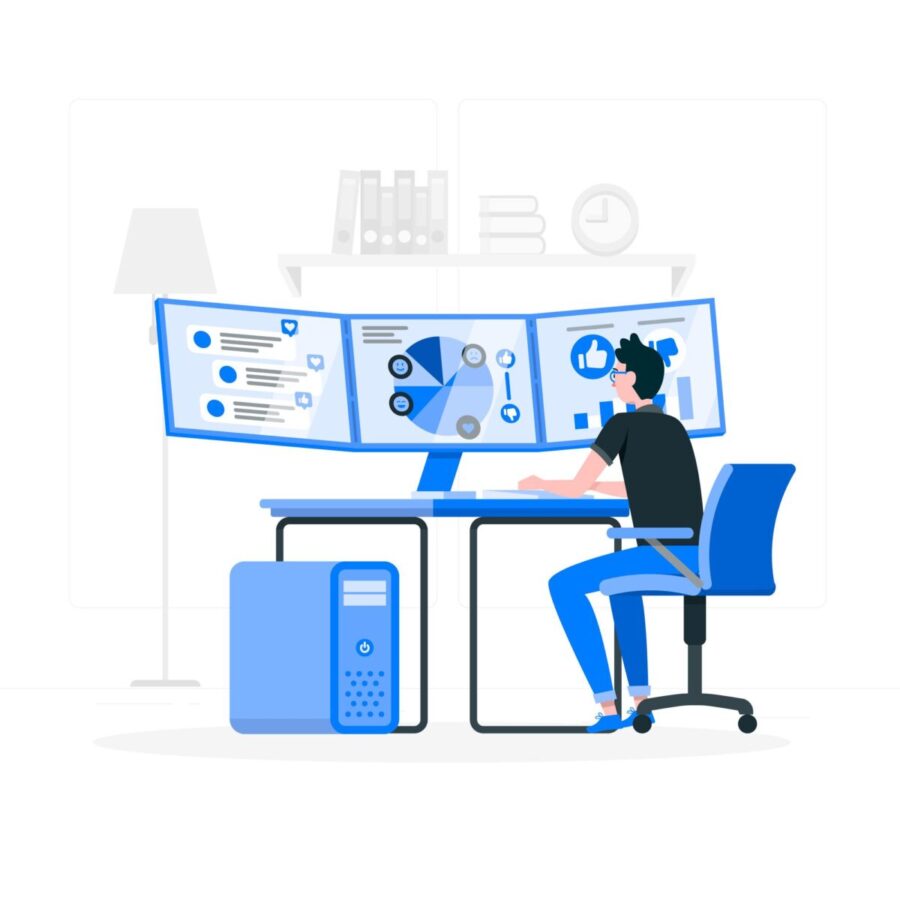In today’s fast-paced business world, companies are constantly seeking ways to improve their productivity and efficiency. One solution that has gained significant attention is the use of employee monitoring software. By implementing such software, organizations can track and analyze employee activities to identify areas for improvement and optimize work processes. In this blog post, we will explore how employee monitoring software can contribute to enhancing company productivity while maintaining a balanced approach that respects employee privacy.
What is Employee Monitoring Software?
Employee monitoring software is a tool used by employers to track and monitor the activities of their employees in the workplace. It provides employers with insights into how employees are utilizing their time and resources during working hours. The software typically captures and records data related to computer and internet usage, including websites visited, applications used, keystrokes, email communication, document access, and active time spent on tasks.
Here are some benefits of employee monitoring software that can boost company productivity:
Task and Time Tracking:
Task and time tracking is the key benefits of employee monitoring software is its ability to track tasks and time spent on projects. By capturing this data, managers can gain insights into the efficiency of work processes, identify bottlenecks, and reallocate resources as necessary. With a clear understanding of how time is allocated across different tasks, companies can optimize productivity and ensure that projects stay on track.
Performance Evaluation:
The employee performance monitoring software provides objective data for evaluating individual and team performance. By analyzing productivity levels, employers can identify top performers and acknowledge their efforts. Simultaneously, it enables managers to identify areas where additional training or support may be required. Regular performance evaluations based on accurate data can drive motivation and create a healthy sense of competition among employees.
Distraction and Time Management:
Distractions and time-wasting activities can significantly hamper productivity. The Employee time tracking software can help identify such behaviors, including excessive use of social media or non-work-related internet browsing. By addressing these distractions, employers can establish guidelines and policies that promote focused work during working hours. As a result, employees can stay more engaged and productive throughout the day.
Identifying Process Bottlenecks:
Efficient work processes are vital for maximizing productivity. Productivity monitoring software for employees can help identify recurring obstacles or bottlenecks in workflows. By analyzing the collected data, managers can pinpoint areas that require streamlining or automation, eliminating inefficiencies and enhancing overall productivity. This proactive approach to process improvement can save time, resources, and frustration for both employees and the organization.
Employee Feedback and Engagement:
Some softwares for monitoring employees includes features that facilitate employee feedback and engagement. Platforms such as surveys, suggestion boxes, or chat tools enable employees to voice their opinions, share ideas, and provide feedback on work processes. This two-way communication fosters a sense of involvement and ownership, leading to higher engagement and increased productivity.
Security and Compliance:
Maintaining a secure and healthy work environment is critical for any organization. The best monitoring software for employees helps ensure compliance with security protocols and industry regulations. It can track and report potential security breaches, unauthorized access attempts, or data leaks, thereby safeguarding sensitive information. By prioritizing security, companies can prevent disruptions and maintain productivity without compromising on data protection.
Balancing Productivity and Employee Privacy:
While employee productivity monitoring software can yield numerous benefits, it is essential to strike a balance between productivity improvement and respecting employee privacy. To achieve this, organizations should:
Clearly communicate the purpose and benefits of the software to employees.
Establish monitoring policies that align with legal requirements and best practices.
Utilize data in an anonymized and aggregated manner to protect individual privacy.
Establish transparent and fair evaluation criteria based on productivity metrics.
Foster a culture of trust, where employees feel supported and valued.
Conclusion:
Employee monitoring software offers significant potential for improving company productivity. By leveraging its features to track tasks and time, evaluate performance, manage distractions, identify process bottlenecks, and encourage employee feedback, organizations can optimize workflows and create a more engaged workforce. However, it is crucial to implement these tools with transparency, fairness, and respect for employee privacy. By striking the right balance, companies can harness the power of employee monitoring software to enhance productivity while maintaining a positive work environment.
